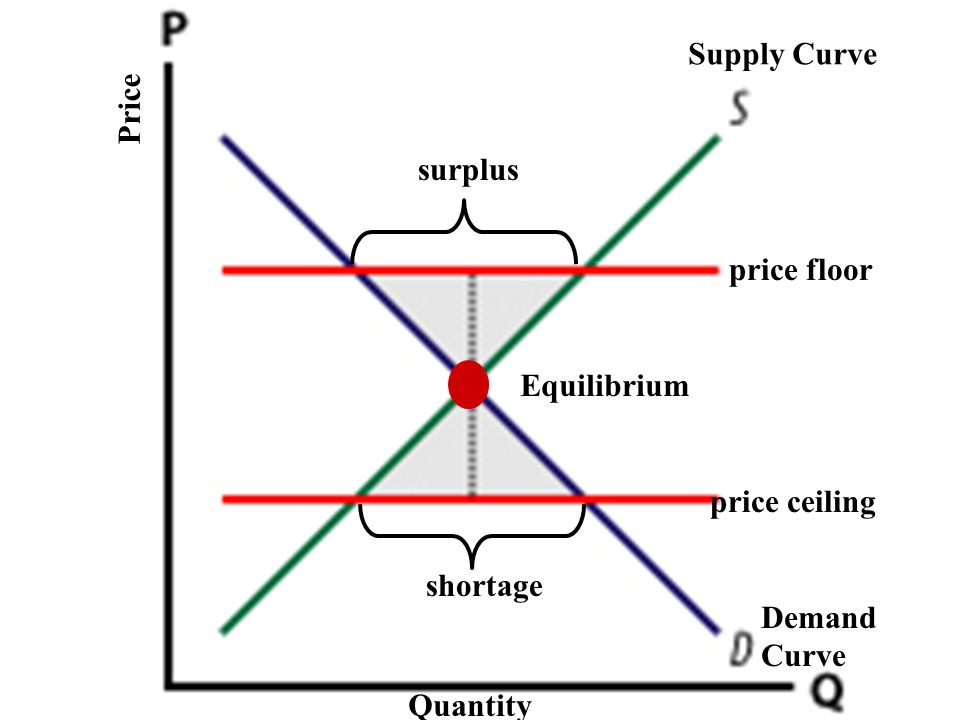Determinants of Price Elasticity of Supply with Examples
Determinants of Supply
A determinant of supply is a factor that affects the number of goods or services that are available for purchase. The determinants of supply are closely related to the law of demand. The demand for a product is affected by the availability of that product, or to put it another way if the supply is plentiful, then demand will be reduced.
A good example of this can be seen with oranges. When there are few oranges in season, they are expensive, and people will buy less of them. But when oranges are abundant and cheap, people will consume more of them because they know they have a readily available supply to choose from.
Determinants of Supply/Factors that Determines Supply
Five major factors determine the number of goods or services that are available for purchase; these factors are known as the “determinants of supply.” They are:
Several factors affect the supply side of the market for a good. These include:
The price at which the good can be sold
The price at which a good can be sold will determine how much will be supplied to the marketplace. If it is low, then suppliers will offer more than if it is high. If the price is high, then suppliers will offer less than if it is low.
To determine how much will be supplied to the marketplace, we must therefore look at the marginal cost of a good. The higher the price, the more supply will be offered to the marketplace.
The price of the good’s substitutes or complements
The price of the good’s complement and substitute are factors that determine what quantity suppliers will supply. If they are high, then suppliers will supply more than when they are low. If they are low then suppliers will supply less than when they are high.
To determine how much will be supplied to the marketplace, we must therefore look at the marginal cost of a good.
If the good’s substitute’s price is higher, relatively, then more suppliers will supply a good. If the price of complements is higher, relatively, then more suppliers will be attracted to supplying said complements.
In this way, an increase in demand for either the complement or substitute increases the supply of said good(s).
💥🎁 New Year & Easter Deals On Amazon !
Don't miss out on the best discounts and top-rated products available right now!
🛒 Shop Now and Save Big Today!*As an Amazon Associate, I earn from qualifying purchases.
The supplier’s costs
The variable costs of a supplier affect their decision to supply goods because when these costs increase, then it will become less profitable for the supplier to produce goods. So they will offer less supply of that good.
For example, a rise in labor costs will decrease supply in the labor market as employers will not be willing to offer more workers when they are more expensive.
The total costs of producing additional units. If the supplier’s total cost decreases as volume increases, then there is a positive relationship between total cost and supply.
The technology that is available to produce the good
The technology available to a supplier depends on how much they can produce, given the other supply chain factors. If they are capable of producing more than currently, then they will be more inclined to supply inputs to the production process.
If the technology improves in nature, then more suppliers will be attracted to supplying said goods (s).
Increase or decrease in taxes
An increase in taxes decreases a good’s supply because suppliers have less incentive to sell said goods. After all, it is more expensive, and as a result, there may not be any sales of this good at all–even if demand remains constant or increases.
Note
It is also worth noting that some factors may actually reduce supply even when they are expected to increase it. For example, an increase in taxes will reduce supply because suppliers have less incentive to supply the good, and as a result, they may not produce the good at all.
Similarly, an increase in suppliers’ costs will also reduce supply because suppliers will incur increasing costs for producing goods.
All of these factors can also alter the demand side of the market for a good. When they do so, then they are known as determinants of demand.
💥🎁 New Year & Easter Deals On Amazon !
Don't miss out on the best discounts and top-rated products available right now!
🛒 Shop Now and Save Big Today!*As an Amazon Associate, I earn from qualifying purchases.
Indeed, all factors that affect the demand side of the market for goods also affect supply. For example, an increase in the price of a good will reduce demand for that good and increase supply. This is because suppliers have more incentive to supply goods when their prices are higher and less incentive to supply when their prices are lower.
The question now becomes how the determinants of demand and the determinants of supply can be used to determine the equilibrium price and quantity in a freely operating marketplace.
First, it is worth noting that free markets will tend to move toward equilibrium, thus equilibrating the market demand and supply side for good. This can be seen by looking at the determinants of supply and demand separately.
For example, if more firms are producing something and are not increasing their output (by using more labor or capital), it will lead to a lower price level and increased demand. When supply and demand are in equilibrium, a good price will be equal to its marginal cost.
Marginal cost is the cost of producing one more good. One determinant that affects supply is how many firms exist within an industry.
In some industries, more firms will mean less competition, which leads to higher prices for consumers and increased profits for firms. This leads to a decrease in the number of firms in an industry (a downward pressure on supply).
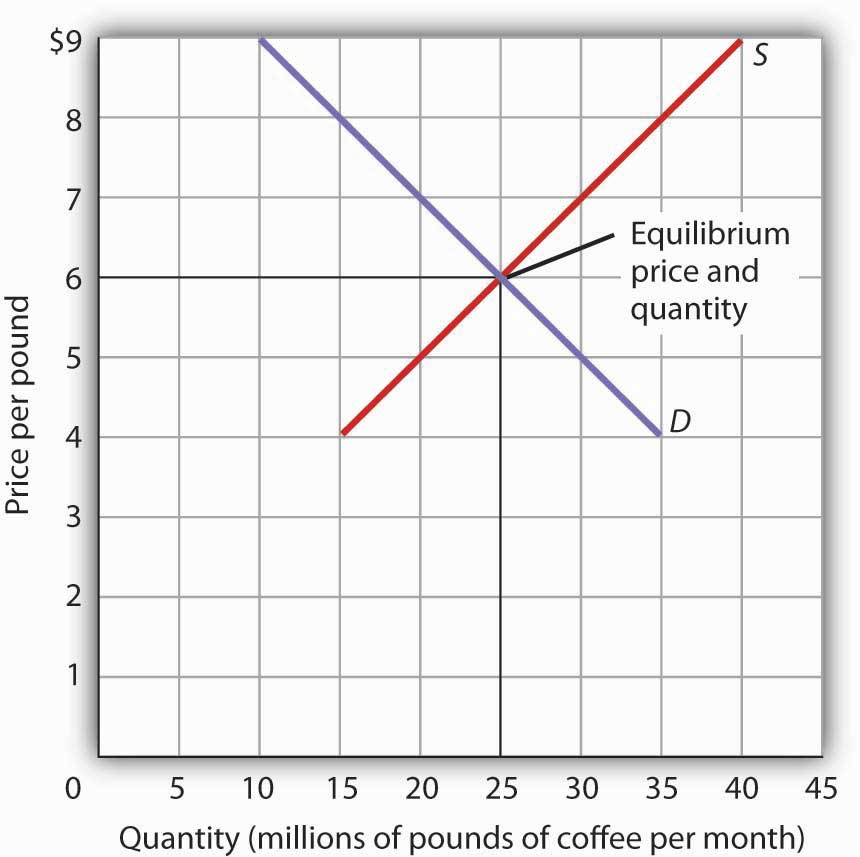
Most of the determinants of supply and demand are related to each other. For example, a rise in the cost of a good’s substitute will raise demand for that good because consumers will not substitute the good they were previously purchasing with it nor its complement. This is especially true when the price of complements rises, which will reduce demand for said goods.
To understand why these factors have their effects, it is necessary to understand the “Law of Demand.” In economics, demand is a function of two variables.
- First, there is a variable known as price. This is essentially how much people must pay for a product.
- Second, there is another variable called quantity demanded. The quantity demanded is basically how many of the products people want to have. Economists define demand as being a function of the price, and the quantity demanded.
There is an inverse relationship between price and quantity demanded because if one goes up, the other must go down. A basic supply and demand graph illustrates this relationship:
💥🎁 New Year & Easter Deals On Amazon !
Don't miss out on the best discounts and top-rated products available right now!
🛒 Shop Now and Save Big Today!*As an Amazon Associate, I earn from qualifying purchases.
Supply Curve
The supply curve in any market will be defined by two essential factors:
- Production
- Opportunity Cost.
Production is a function of the supply of labor and capital. The Opportunity Cost is the opportunity foregone while producing the good, which is often related to wages or profits.
If there are many factors affecting supply, like in an oligopoly, then there will be many supply curves, and prices within each curve will be individually affected by the price of the other goods. If there are few supply determinants, then production cost will mostly constrain prices to a single level because they all affect production together.
Determinants of supply can be both causes and effects in a market. For example, raising the price of oranges increases supply and brings down demand. However, increasing the price of oranges also raises the opportunity cost for orange producers so that more production will occur. These are opposite forces within a single market.
The Law of Demand states that there is an inverse relationship between the price and the number of goods that are demanded. If the price goes down, then the quantity demanded goes up, and vice versa. This can be represented by a graph:
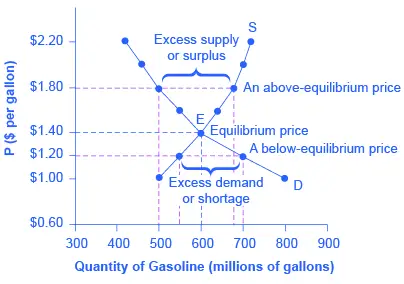
The demand curve will shift when any of the determinants affect supply change or other changes in income or tastes. These demand determinants mainly affect consumers because they consider their own personal income, their own tastes, and convenience in ordering or choosing a product.
For example, if an increase in baseballs’ price means that you will have less money left to buy food, then your demand for baseballs will decrease.
There are three main determinants of supply: prices, costs, and technology. Prices are how much it costs to produce a good. There is often a limited supply because there is not enough room or time to make more goods. Costs are made up of production costs (capital, land, and labor) and opportunity costs (discussed below).
Technology is the technique by which something is produced. It can be improved to increase efficiency or be limited by tradition, culture, law, and many other aspects.
💥🎁 New Year & Easter Deals On Amazon !
Don't miss out on the best discounts and top-rated products available right now!
🛒 Shop Now and Save Big Today!*As an Amazon Associate, I earn from qualifying purchases.
When supply is at a maximum, there is little room to produce more of a good. An example of this is the price of oranges in late autumn. A major determinant of supply is “opportunity costs.” Opportunity costs are all the other things that money could have been spent on, either for investment or consumption. Money used to produce a good could have been used to buy a different alternative well.
For example, if the opportunity cost of producing oranges is very low, then more other goods will be produced because people have available money. When the opportunity cost is raised (for example, because it becomes cold), it means that orange producers must use more land and time on production rather than on other options so that supply will decrease.
The supply curve will shift up if technological advances make production easier or if more goods can be produced. An example of this is genetically modified crops that make mass production possible and increase total supply.

There are three main determinants of demand: Prices, tastes, and incomes. Other goods’ prices affect the demand for an item because consumers must buy the product with their limited income. For example, if people can buy other products that cost less, they will want to buy fewer baseballs.
Many factors affect tastes, some of which include advertising and restaurant quality.
An example of this is the increased popularity in restaurants that serve beer instead of wine. Older people may prefer wine, but younger people prefer beer because it tastes better, is more convenient, and presents them with fewer health risks. Also, it is somewhat safer to drink beer than wine, so they spend less money on medical costs as well.
People’s incomes play a role in how much they choose to spend on a product. An example of this is the athletic shoe industry. Some people can afford Nike shoes, and others can only afford L.A. Gear shoes because Nike costs more money.
Some determinants of demand are causes and some that affect. For example, price is a cause of demand, and consumer income is an effect since it affects the price of goods in any market.
Price Elasticity of Supply
Price elasticity of supply refers to the responsiveness of the quantity supplied in response to any change in price. Such a measure is always defined with respect to a corresponding change in quantity supplied. Price elasticity of supply reflects the rate at which suppliers are willing to provide additional units, given price changes with respect to time.
The most frequently used formula for calculating elasticity is:
💥🎁 New Year & Easter Deals On Amazon !
Don't miss out on the best discounts and top-rated products available right now!
🛒 Shop Now and Save Big Today!*As an Amazon Associate, I earn from qualifying purchases.

where:
- Qs = Quantity Demanded
- P= Price
The law of supply is the relationship between supply and price, which states that all other things are held constant; as the price of goods increases, suppliers will supply more of that good; and as the price of goods decreases, suppliers will supply less.
Other factors can affect the law of supply, such as shifts in demand and technology. The relationship between price and quantity supplied is expressed by an upward-sloping curve called a supply curve.
The concept that producers benefit from higher prices is referred to as “producer surplus.”
“Producer surplus” is the difference between marginal cost and price at which a producer would sell its output in a perfectly competitive market. The amount of producer surplus is maximized when marginal cost equals price (output quantity supplied equals output quantity demanded).
If demand and marginal revenue are both increases, then there is an upward-sloping supply curve. This shows that there will be an increase in supply with the price. When demand and marginal revenue are both decreases, then there is a downward sloping supply curve. This shows that there will be a decrease in supply with the price.
If demand and marginal revenue are both decreases, then there is a horizontal supply curve. This shows that the suppliers do not change their quantity supplied regardless of price changes.
This is because, at a particular point on a supply curve, production factors cannot be increased or decreased without affecting costs.
If demand is constant, then the supply curve is horizontally flatter. The only time that the supply curve slopes upward is when demand decreases and marginal revenue increases. In this case, there will be an increase in supply. When demand is constant, the elasticity of supply equals one. In all cases of perfectly inelastic or perfectly elastic supplies, the marginal revenue associated with supplying one unit produces zero units equal to one.
Determinants of Price Elasticity of Supply with Examples
Income Elasticity of Supply
The income elasticity of supply measures the proportionate change in quantity supplied, resulting from increased consumer disposable income.
Positive income elasticity of supply means that the higher consumers’ incomes, the more they want to buy. If it were negative, producers would make less as incomes rise and charge more as incomes fall. If it were zero, production would not vary with changes in consumer income. The rates of increase and decrease are calculated as follows:
💥🎁 New Year & Easter Deals On Amazon !
Don't miss out on the best discounts and top-rated products available right now!
🛒 Shop Now and Save Big Today!*As an Amazon Associate, I earn from qualifying purchases.
In other words: if supply increases as incomes increase, the income elasticity of supply is positive. If it decreases, the income elasticity of supply is negative.
Substitution elasticity
The substitution elasticity measures the proportionate change in quantity supplied resulting from a change in the price of one of the products used to produce the good being analyzed.
Price Elasticity of Supply
Price elasticity measures the relative changes in supply and demand to price changes. It is a useful measure because it helps us understand how prices affect the supply and demand for goods and services.
It is imperative to know the price elasticity of supply to predict suppliers’ reactions to changes in price.
Price-elasticity of supply is the slope of the supply curve, which can be measured as the percentage change in quantity supplied per percentage change in price.
The price elasticity of supply is 1 when marginal cost equals average variable cost. In this situation, the amount suppliers are willing to supply increases in line with a price increase. The slope of this curve (the elasticity) is equal to −1.
Price elasticity of supply formula
The price elasticity of supply = % change in quantity supplied / % change in price.
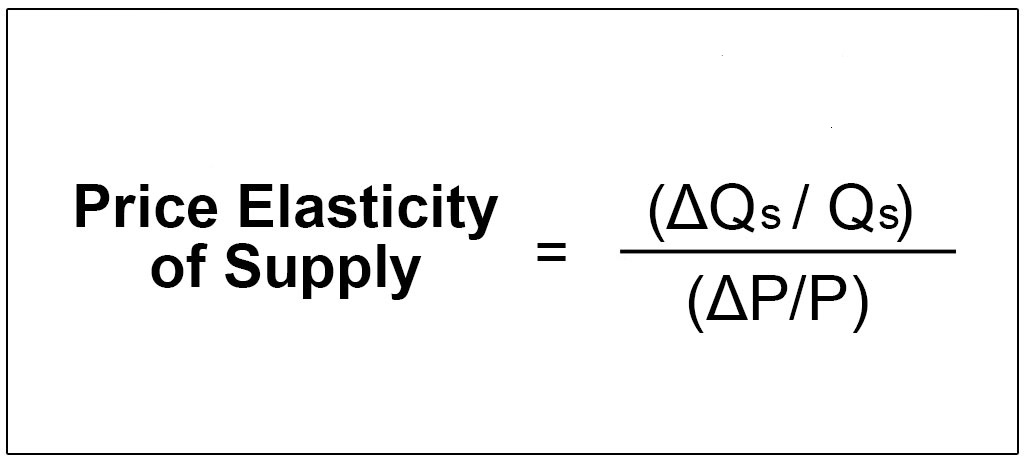
Elastic & Inelastic Supply Curves
Elastic Supply Curves
Elasticity is the degree to which a change in demand for a product or service affects its price. The supply curve for most goods and services is elastic, meaning that more will be supplied as prices increase. If the demand for a good or service decreases, then suppliers will produce less of it.
💥🎁 New Year & Easter Deals On Amazon !
Don't miss out on the best discounts and top-rated products available right now!
🛒 Shop Now and Save Big Today!*As an Amazon Associate, I earn from qualifying purchases.
Inelastic supply curves are less responsive to changes in prices. Inelastic supply curves are those where an increase in demand leads to a smaller percentage increase in price and vice versa.
Example of Inelastic and Elastic Supply Goods
An example of an elastic supply curve would be that of gasoline; when there’s high demand due to gas prices going up, the cost per gallon will go down because more sellers are willing to sell at that time.
The supply of a good is inelastic when the quantity supplied does not change much, regardless of price changes. Examples include gasoline, medication, water, and electricity.
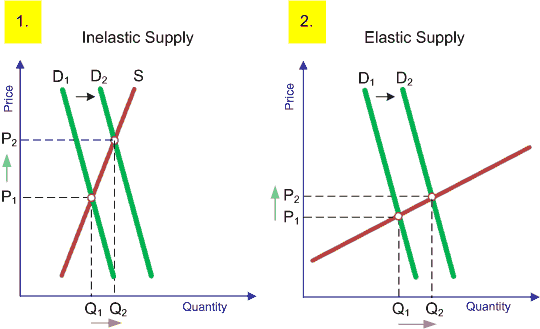
Excess Demand and Excess Supply Graph
Excess supply is the condition that occurs when there are more goods available for purchase than consumers want to buy at a given price. A shortage of supply is the condition that occurs when there are fewer goods available for purchase than consumers want to buy at a given price.
Excess demand is when the quantity demanded exceeds the quantity supplied at a given price. In contrast, excess supply is when the quantity supplied exceeds the quantity demanded at a given price.
